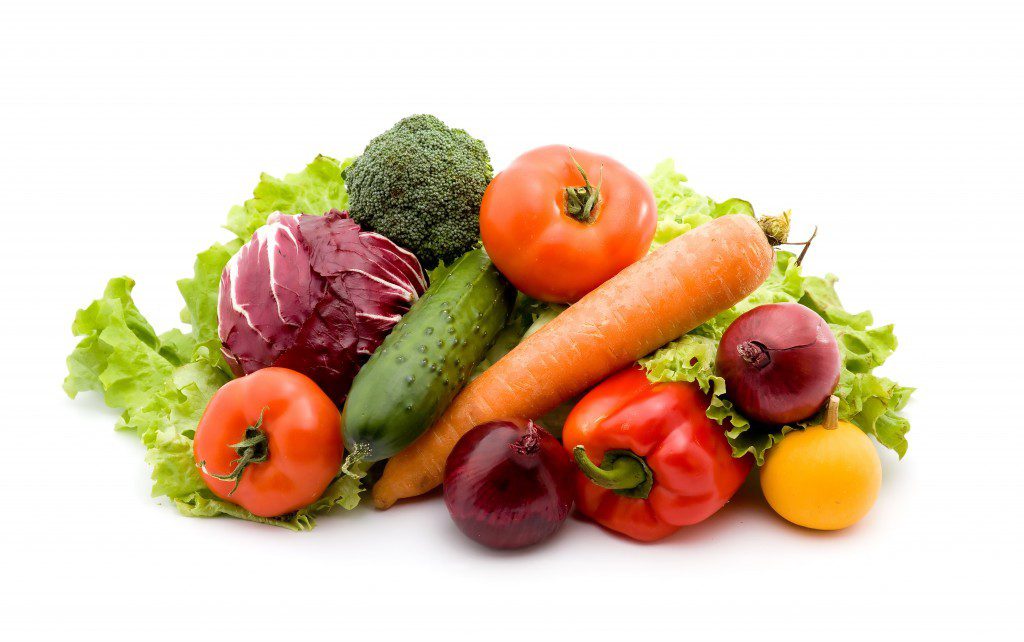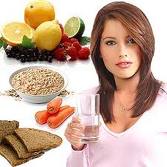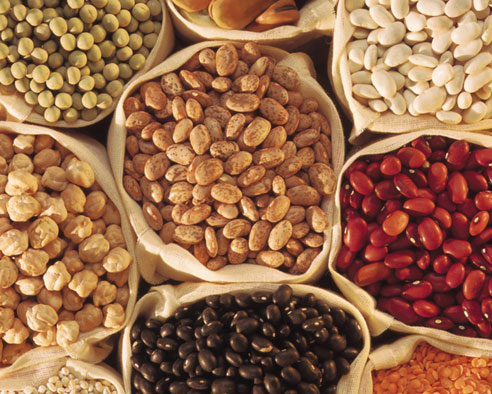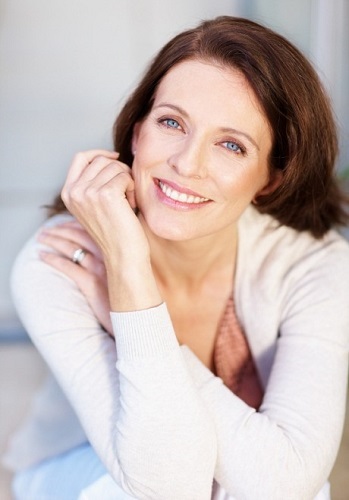“What is Ketosis and Why a Ketogenic Diet?”
Could your biggest breakthrough be waiting for you right here?
I am SO glad you stopped by today!
I’ll bet you’re wanting to know all about this “best kept secret”…
The truth is you are experiencing it right now.
You see, your goal to get a life with less stress and more joy says something about you.
Something specific…
Dear Friend,
Firstly, I don’t want you to read this just because it’s free content, anyone can do that…
I want you to read because you really want to make a significant change in your life…
Because you’re determined to reach your goals.
And because you won’t let any person, any excuse or any obstacle get in your way.
10 Signs of a sluggish metabolism…
Hard to lose weight
Hard to stay lean
Often feel tired/drowsy
Body aches and pains
Hungry between meals
Unattractive body shape
Easily fatigued
Flabby or weak muscles
Bags or circles under eyes
High stress or anxiety
Does any of the above sound familiar?
Ketosis or ketogenic diet is a high-fat, adequate protein and low-carbohydrate diet…
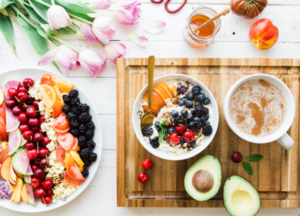
Generally carbohydrates in food contain glucose which the body utilizes as a primary source of energy.
Ketogenic diet isn’t really a diet it’s more a way of eating designed to have a low intake of carbohydrates.
The result is the body looks for alternative sources of energy…
Ketosis occurs when the body is in a state of low carbohydrate in the diet.
The liver converts the fat into fatty acids and ketones and replaces glucose as an energy source.
On a ketogenic diet, the body utilizes fats stored in the body as a source of energy.
Insulin levels will drop and fat burning will increase as it is on demand.
As a result, the body has a steady supply of energy while weight decreases over time.
Benefits of Ketogenic Diet
Note: For patients who are obese, ketogenic diet helps to lose weight and burn fats.
Below are other benefits of a ketogenic diet…
1. Improved Weight Loss
In a low-carbohydrate diet, the body does not store insulin as an extra energy source.
Instead, it uses existing fats in the body for energy expenditure.
In a high-fat and adequate protein diet, food consumed are heavy and tend to be filling.
So it diminishes hunger and overeating of empty calories such as sweets and junk foods.
2. Reduced risk for Type 2 Diabetes
Eating foods low in carbohydrates reduces the amount of sugar in the blood.
So if there is a low intake of carbohydrate-rich foods, sugar levels in the body are managed and controlled.
3. Increased Physical endurance
In a high carbohydrate diet, fat stores are not available as the body relies on insulin to fuel the body.
The body’s supply of stored carbohydrates lasts only for a couple of hours.
This results into refueling the body to have a constant source of energy.
In a ketogenic diet it can increase physical endurance.
This happens because the body has constant access to all energy sources by fats stored within the body.
Since there are a lot of fats stored in the body…
A person can endure long, physical and strenuous activities without the need for eating constantly.
4. Increased levels of HDL or “good cholesterol”
In the body, we have HDL (High-Density Lipoprotein) and LDL(Low-Density Lipoprotein).
These lipoproteins carry cholesterol in the blood.
LDL carries cholesterol from the liver…
And to the rest of the body while HDL carries cholesterol away…
And to the liver which is reused or excreted.
Studies have shown an increased level of HDL can lower the risk of having a heart disease.
5. Reduced Blood Pressure
An elevated high blood pressure or hypertension increases the risk for many diseases.
These can be heart disease, stroke and kidney failure.
In a high-insulin diet, salt and fluid tend to accumulate increases blood pressure.
High levels of insulin can also cause tissue within blood vessels to thicken.
This may also lead to a high blood pressure.
In a ketogenic diet, the body is discouraged from accumulating fluid…
And increases elimination of salt via urine which significantly decreases blood pressure.
What’s in a Ketogenic Diet?
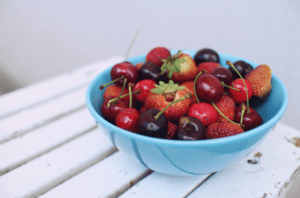
A ketogenic diet consists of high fat, moderate protein and very low carbohydrates:
70% of fats
25% protein
5% carbohydrates
Ideally, there should be a low intake of carbohydrates maintained below 20 grams.
The fewer carbohydrate intake the faster the body will undergo ketosis.
Carbohydrates can be limited and should only come from vegetables, nuts, and dairy.
How many carbs can you eat and still be in ketosis?
In general, the daily intake of net carbs required to enter ketosis could vary from 20 to 100 grams per day.
And very rarely over 100 grams per day…
Most people experiencing ketosis claim to have reached this state at about 20-50 grams of net carbs per day.
Here are some foods you should avoid:
Refined carbohydrates – bread, pasta, cereals…
Starch – potatoes, legumes, beans, yams…
Sugar – honey, agave, maple syrup…
Fruit -apples, bananas, oranges…
Here are some foods you should eat on a ketogenic diet:
Nuts and seeds – walnuts, macadamia, sunflower seeds, pecan, almond, hazelnut…
Vegetables – cauliflower, broccoli, asparagus, cucumber, zucchini…
Meat – poultry, eggs, fish, beef, lamb…
Sweeteners – stevia, monk fruits and other low carb sweeteners..
Oils – coconut oil, high-fat salad dressing…
Dairy – heavy cream, cheeses, butter, cream cheese, mayonnaise…
Leafy greens – spinach, kale, lettuce…
Drinks – coffee, coconut water, diet soft drink, tea, wine…
Fruits – coconut, plum, lemon…
Berries – raspberries, blackberries, plum, kiwi, clementine, strawberries…
You might want to consider a powdered protein source as well.
IT’S not necessary, however it makes it easy to use powdered broth.
A powdered broth is similar to a protein drink.
How to Know if Your Body Is in the State of Ketosis
In a state of ketosis your body will experience the following…
1. Fruity breath – Because of high amounts of ketones in the body, it can make a person’s breath smell fruity.
It’s almost similar to the odor of a nail polish remover…
2. Dry mouth and increased thirst – people who are on a ketogenic diet tend to feel that their mouths are dry.
So it is essential that a person should be adequately hydrated.
3. Reduced Hunger – Because of a low carbohydrate intake there is a less tendency for unnecessary cravings.
4. Increased energy – this is due to fats being constantly burned as a source of energy.
1 – Minimize carb consumption…
2 – Include coconut oil in daily diet…
3 – Include daily physical activity…
4 – Increase healthy fat intake…
5 – Do intermittent fasting or fat fast – fast and feast regularly.
Fast for a certain number of hours, then consume all calories within a certain number of hours.
Eat normally, then fast 1-2x a week.
Consume your normal meals every day, pick one or two days a week where you fast for 24 hours.
6 – Maintain adequate protein intake…
7 – Test ketone levels and adjust diet as needed.
How long does it take for the body to go into ketosis?
Usually it only takes 1-3 days to get into ketosis.
However getting in ketosis is easy becoming keto-adapted is the tricky part.
It usually takes a month to get to first stage of becoming keto-adapted…
And it takes up to 2 years to fully train your body to use ketones fully.
Common Side Effects of Ketogenic Diet
How long does it take to get keto flu?
First of all remember it won’t last forever.
Low-carb flu usually lasts around 3-5 days.
Side note: It could be 1-2 weeks for some unlucky people with high metabolic resistance.
What is the keto flu?
Many people (not everyone) who starts low carb diet experiences what’s called keto flu or induction flu.
Usually 1 to 3 days while the body is adapting to burning ketones instead of glucose.
The basic symptoms are:
Headaches – a high-protein and low-carb diet may also cause dizziness, weakness and fatigue.
Because this type of diet often limits or eliminates high-fiber foods like whole grains and produce.
Cramps – this is due to lack of minerals like magnesium in the body.
In order to avoid this, make sure to increase in water intake and incorporate salt into your food.
Constipation – mainly a result of dehydration.
An increase in water intake can reduce the risk of having constipation.
Vegetables high in fiber also addresses constipation issues.
Heart Palpitations – when the body is adapting to ketosis…
The heart has a tendency to beat faster and harder.
This is normal…
If the problem persists, increase water intake and incorporate enough salt in the diet.
Why Start a Ketogenic Diet Today?
A ketogenic diet consists of high-fat, moderate protein and low-carbohydrates.
This way of eating can significantly improve the overall health of a person.
Examples are body weight, blood sugar, blood pressure and others…
In a ketogenic diet it is recommended to use a strict implementation.
And commitment are needed in order to achieve healthier and better version of yourself.
A quick trip to health professional is also recommended in order to achieve desired results.
At the end of the day…
It’s not the size nor the shape of the body matters.
Your overall physiological and mental health should always be above the figures and sizes.
The ONLY way to lose fat, keep it off for good is to strengthen and tone muscles.
Really it’s all about re-setting and re-tuning the metabolic rate.
This is directly linked to lean body mass.
And this is why resistance training is CRUCIAL for losing fat.
Yes the best and proven long term solution.
NO, not running yourself into the ground with endless cardio…
In fact, absolutely nothing burns more fat than basal metabolic rate.
Yes basal metabolic rate accounts for 70% of calories burned every single day.
No single food or any other “diet” will ever even come close to experiencing this impact.
And the ONLY way to BOOST metabolic rate to burn 24/7 …
Even while you’re sitting on couch is by exercising smarter, not harder.
Ketogenic Diet
References
- Gaesser, G. A. (2013). Big fat lies: The truth about your weight and your health. Gurze Books.
- Grundy, S. M. (1998). Multifactorial causation of obesity: implications for prevention. The American journal of clinical nutrition, 67(3), 563S-572S.
- How crash diets harm your health.http://www.cnn.com/2010/HEALTH/04/20/crash.diets.harm.health/
- Donnelly, J. E., Pronk, N. P., Jacobsen, D. J., Pronk, S. J., & Jakicic, J. M. (1991). Effects of a very-low-calorie diet and physical-training regimens on body composition and resting metabolic rate in obese females. The American journal of clinical nutrition, 54(1), 56-61.
- Davies, H. J., Baird, I. M., Fowler, J., Mills, I. H., Baillie, J. E., Rattan, S., &Howard, A. N. (1989). Metabolic response to low-and very-low-calorie diets. The American journal of clinical nutrition, 49(5), 745-751.
- White, J. V., Guenter, P., Jensen, G., Malone, A., Schofield, M., Group, A. M. W. (2012). Consensus statement of the academy of nutrition and dietetics/american society for parenteral and enteral nutrition: characteristics recommended for the identification and documentation of adult malnutrition (undernutrition). Journal of the Academy of Nutrition and Dietetics, 112(5), 730-738.
- Brownell, K. D., & Rodin, J. (1994). Medical, metabolic, and psychological effects of weight cycling. Archives of Internal Medicine, 154(12), 1325-1330.
- Brownell, K. D., Greenwood, M. R. C., Stellar, E., & Shrager, E. E. (1986). The effects of repeated cycles of weight loss and regain in rats. Physiology & Behavior, 38(4), 459-464.
- Koffler, M., & Kisch, E. S. (1996). Starvation diet and very-low-calorie diets may induce insulin resistance and overt diabetes mellitus. Journal of Diabetes and its Complications, 10(2), 109-112.
 Can you lose weight eating anything you want? Yes, it is absolutely possible to lose weight and eat whatever you want.
Can you lose weight eating anything you want? Yes, it is absolutely possible to lose weight and eat whatever you want.




